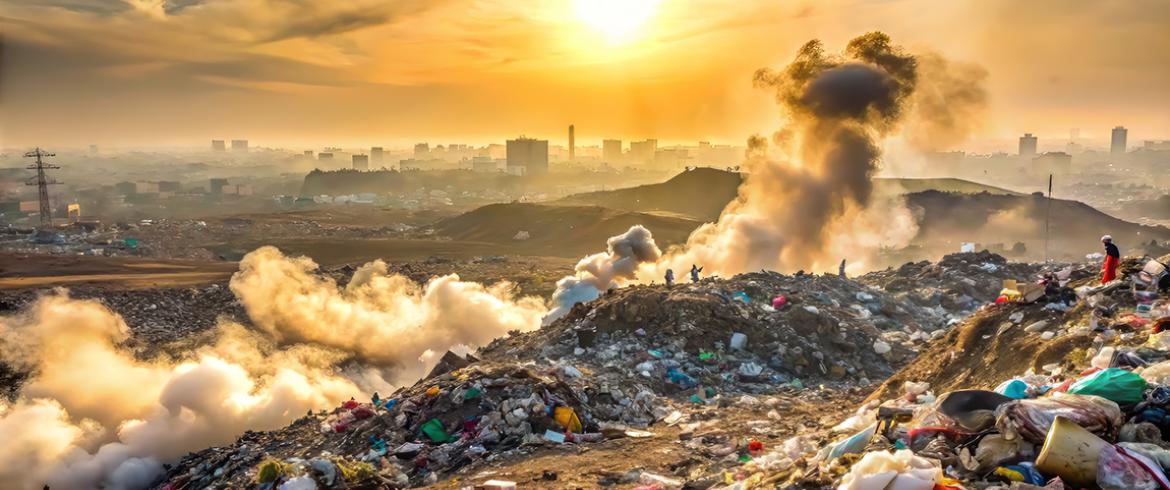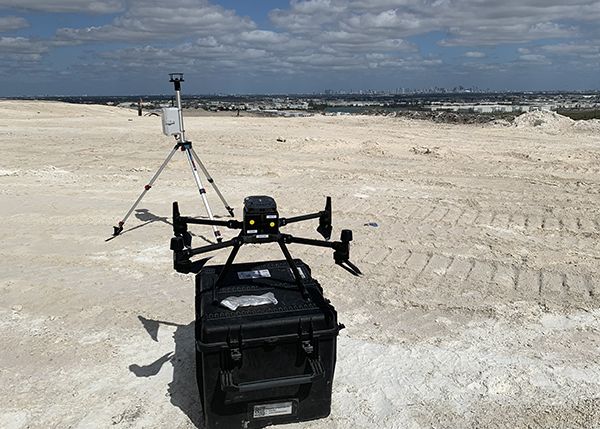
AI image generated by Adisorn for Adobe Stock
Methane (CH4) is the second most prevalent greenhouse gas after carbon dioxide (CO2) and significantly contributes to global warming. Every year, an estimated 3.7 million metric tons of methane are released into the atmosphere from municipal landfills.
So, what can we do about it?
Tarek Abichou, a civil engineering researcher at the Resilient Infrastructure and Disaster Response Center (RIDER) in the FAMU-FSU College of Engineering, has some ideas. He is spearheading an innovative methane detection technology study for the U.S. Department of Energy.
“Methane may not receive as much attention as CO2 but its impact on global warming is undeniable,” Abichou said. “Despite its lower atmospheric presence compared to CO2, methane is responsible for about one fifth of the enhanced greenhouse effect. By mitigating methane emissions, we can effectively slow down the rate at which our climate is changing.”

Abichou and a team of researchers are developing a comprehensive tool to measure ambient methane concentration and identify specific areas that need remediation. They are conducting the research at the Three Rivers Landfill facility in Jackson, South Carolina.
“The system will be valuable resource for landfill operators to help them pinpoint the locations of methane leaks and determine their intensity,” Abichou explained. “We can help users compare emission reduction in different scenarios and quantify emission rate.”
The tool uses stochastic Genetic Algorithms (GA) to estimate the total methane emitted. These sophisticated algorithms are particularly effective in solving complex problems such as calculating emissions. The researchers will use advanced techniques such as surface emission monitoring (SEM) and drone monitoring to analyze ambient air methane and acetylene concentrations.

“We plan to use fixed continuous sensors, mobile sensors such as rovers and aerial sensors such as drones for this project,” Abichou said.
Highlighting the urgency of their work, he emphasized that methane has a relatively short atmospheric lifetime of about 10-12 years, meaning that actions taken now can yield significant impacts in the future.
“While CO2 can persist in the atmosphere for centuries, reducing methane fugitive emissions offers a relatively swift pathway to curbing global greenhouse gas emissions,” Abichou explained. “Reducing methane emissions from landfills will have a significant impact on overall methane emissions, driving positive change for our environment and climate.”
The Institutions Partnership Program (MSIPP), Department of Energy, Office of Savannah River Nuclear Solutions, LLC, funds the 12-month, $350,000 study, through Florida A&M University. Abichou’s team will further develop, calibrate and test methane leak detection and emission quantification at the Three Rivers Landfill facility in South Carolina.
RELATED ARTICLES
Engineering professor partners with childhood friend to invest in elementary education for Tunisia
Engineering Safer Solid Waste is a Career Goal for Bently Higgs
